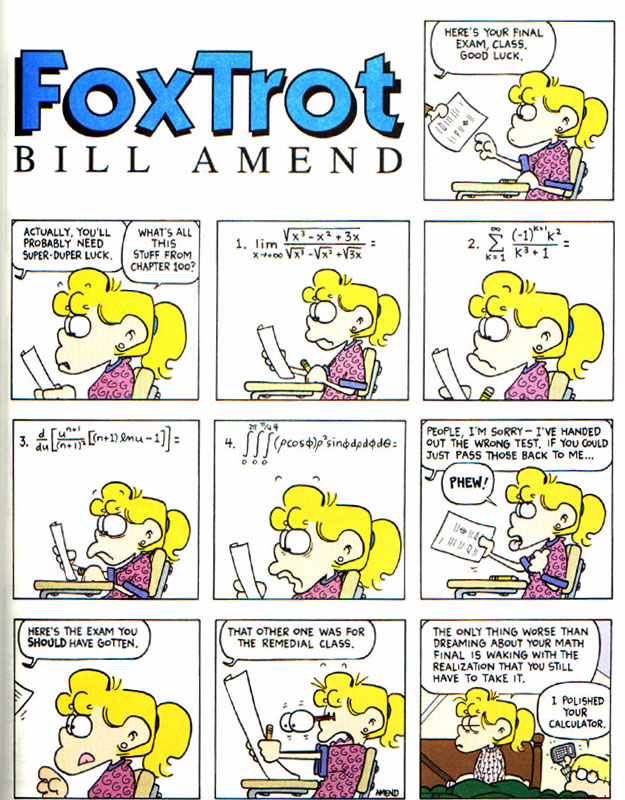The term limit comes about relative to a number of topics from several different branches of mathematics.
A sequence of elements in a topological
space
is said to have limit
provided that for each neighborhood
of
, there exists a natural number
so that
for all
. This very general definition can be specialized in
the event that
is a metric space, whence one says that a sequence
in
has limit
if for all
, there exists a natural number
so that
|
(1)
|
for all . In many commonly-encountered
scenarios, limits are unique, whereby one says that
is the limit of
and writes
|
(2)
|
On the other hand, a sequence of elements from an metric space may have several - even infinitely many - different limits
provided that
is equipped with a topology which fails to be T2. One
reads the expression in (1) as "the limit as
approaches infinity of
is
."
The topological notion of convergence can be rewritten to accommodate a wider array of topological spaces
by utilizing the language of nets. In particular, if
is a net from a directed
set
into
, then an element
is said to be the limit of
if and only if for every neighborhood
of
,
is eventually in
, i.e., if there exists an
so that, for every
with
, the point
lies in
. This notion is particularly well-purposed for topological
spaces which aren't first-countable.
A function
is said to have a finite limit
if, for all
,
there exists a
such that
whenever
. This form of definition is sometimes called
an epsilon-delta definition. This can
be adapted to the case of infinite limits as well: The limit of
as
approaches
is equal to
(respectively
)
if for every number
(respectively
),
there exists a number
depending on
for which
(respectively,
) whenever
. Similar adjustments can be made to define
limits of functions
when
.
Limits may be taken from below
|
(3)
|
or from above
|
(4)
|
if the two are equal, then "the" limit is said to exist
|
(5)
|
The expression in (2) is read "the limit as approaches
from the left / from below" or "the limit as
increases to
," while (3) is read "the limit as
approaches
from the right / from above" or "the limit as
decreases to
." In (4), one simply refers to "the limit as
approaches
."
Limits are implemented in the Wolfram Language as Limit[f,
x-> x0]. This command also takes options Direction
(which can be set to any complex direction, including for example ,
,
I, and -I), and Analytic, which computes symbolic limits
for functions.
Note that the function definition of limit can be thought of as a natural generalization of the sequence definition due to the fact that a sequence in a topological space
is nothing more than a function
mapping
to
.
|
(6)
|
is said to exist if, for every ,
for infinitely many
values of
and if no number less than
has this property.
An upper limit
|
(7)
|
is said to exist if, for every ,
for infinitely many
values of
and if no number larger than
has this property.
Related notions include supremum limit and infimum limit.
Indeterminate limit forms of types and
can often be computed with L'Hospital's
rule. Types
can be converted to the form
by writing
|
(8)
|
Types ,
, and
are treated by introducing a dependent variable
|
(9)
|
so that
|
(10)
|
then calculating lim .
The original limit then equals
,
|
(11)
|
The indeterminate form is also frequently encountered.
All of the above notions can be generalized even further by utilizing the language of ultrafilters. In particular, if is a topological space and if
is an ultrafilter on
, then an element
is said to be a limit of
if every neighborhood of
belongs to
. Several authors have defined similar ideas relative to filters as well (Stadler and Stadler 2002).
The June 2, 1996 comic strip FoxTrot by Bill Amend (Amend 1998, p. 19; Mitchell 2006/2007) featured the following limit as a "hard" exam problem intended for a remedial math class but accidentally handed out to the normal class:
 |
(12)
|
